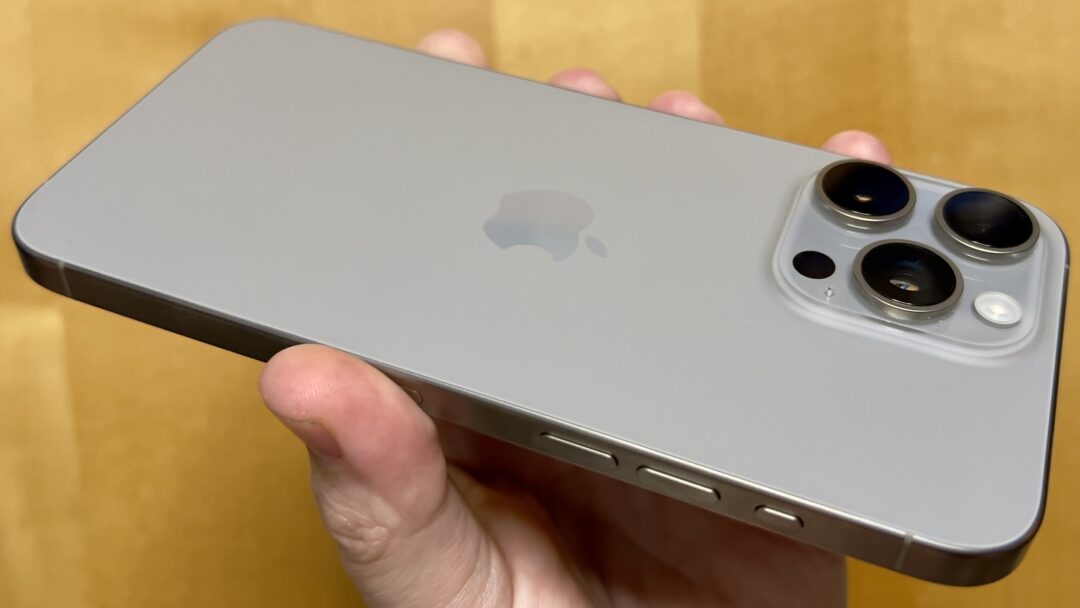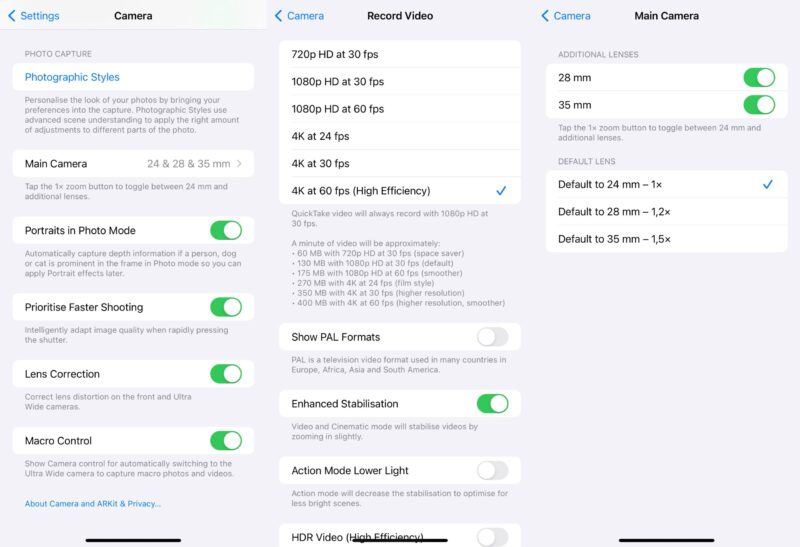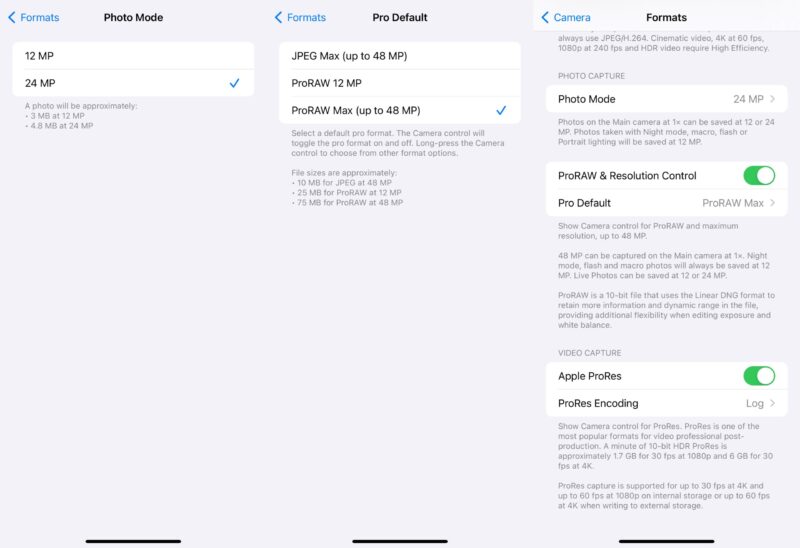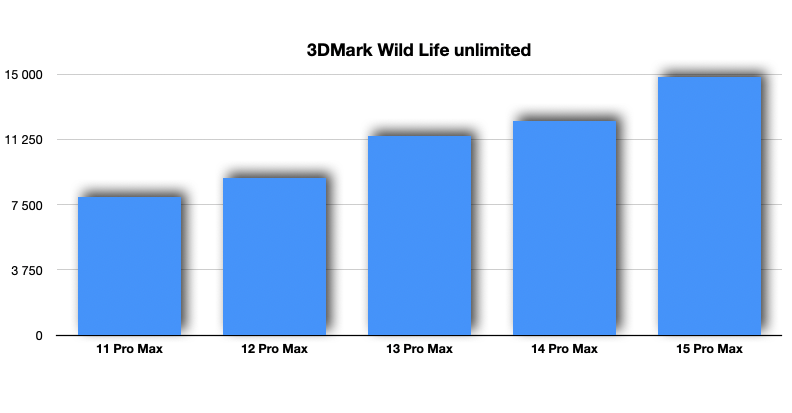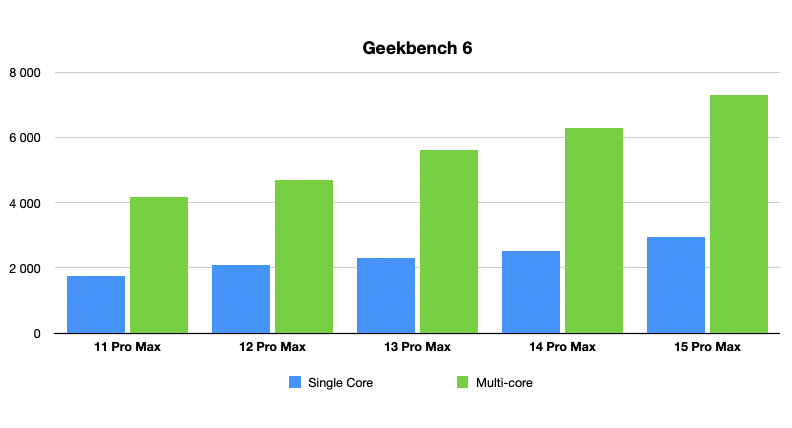After this year’s big Apple event, the launch of the new iPhone models in September, we had mixed feelings. It felt like the base models got many of last year’s Pro features, such as the bright display and Dynamic Island, as well as the 48MP camera. Whereas the Pro models merely got a new processor and new materials. And now they all have USB-C, of course. But then again, the Pro Max also has a new telephoto camera, which suggests that Apple is still trying to differentiate the models to find different target groups with different needs and budgets. Let’s take a look at the Pro Max to see if it has any other tricks up its sleeve.
The 14-inch MacBook Pro with M2 Pro processor is the best and fastest laptop in its price class. But Apple should upgrade the webcam.
Appearance and construction
The big change in appearance is that it is now made of titanium instead of stainless steel. Titanium is a very durable yet lightweight material, which means the Pro Max is actually 10 per cent lighter! The sides have a nice brushed metal look and we think our test sample in natural titanium colour is very nice, although we also fancy the blue model.
The display also has a narrower edge, which has been used to make the phone a few millimetres smaller instead of making the screen larger. On the other hand, it has become slightly thicker, probably due to the new camera. The result is that you have to buy a new case. However, the mobile phone also has slightly more rounded edges, which makes it more comfortable to hold if you prefer to go caseless.
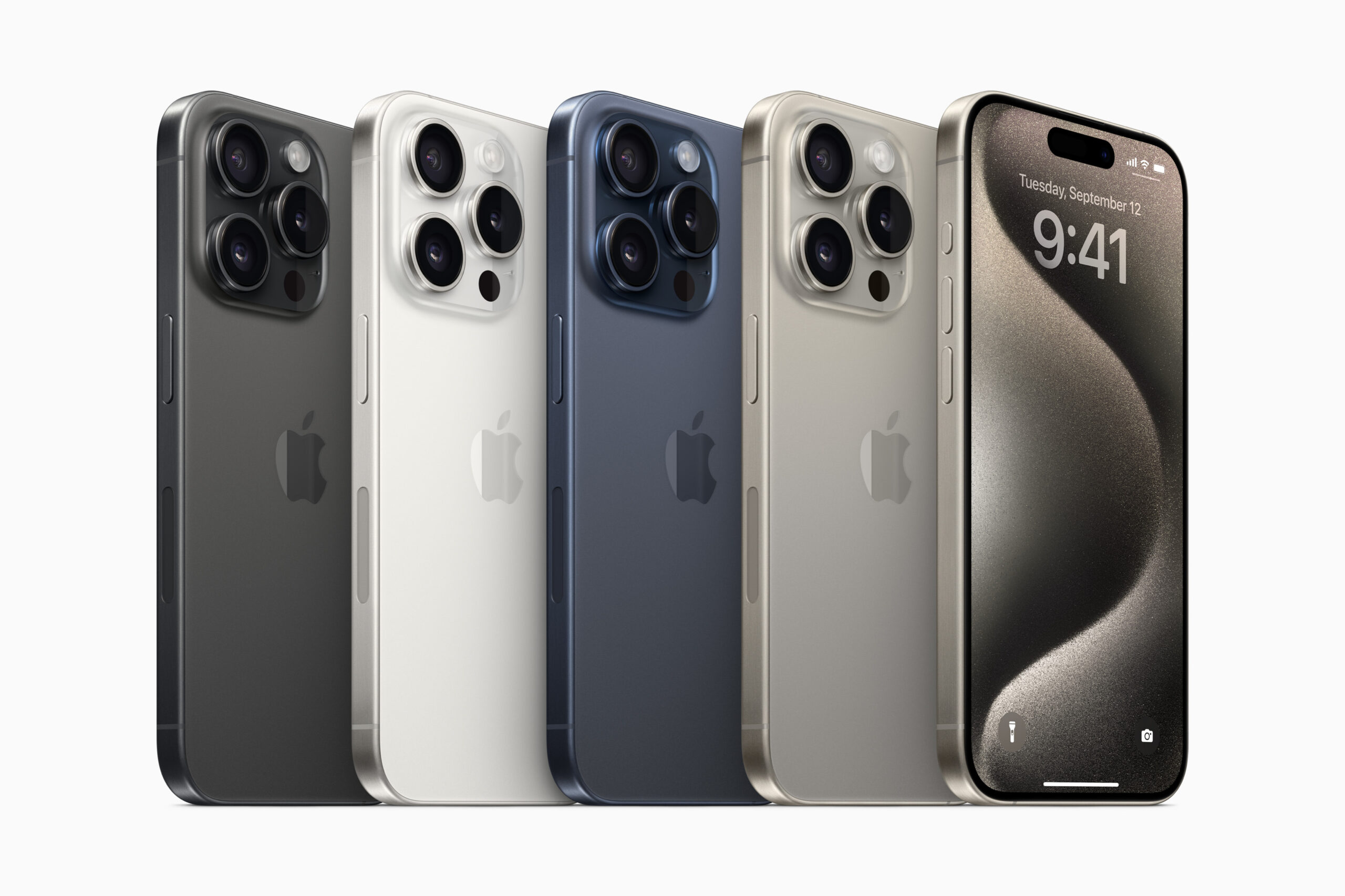
The display
Not only has the display not gotten any bigger, it’s exactly the same display as last year’s iPhone 14 Pro. However, that in turn was upgraded from the 13 Pro with much better brightness, an ‘always on’ display, and a refresh rate that can go down to 1Hz to save power. But Apple’s displays have always been good, with excellent colour reproduction, so we can’t really complain about the screen.
Camera
Apple says we now have the equivalent of seven camera lenses, but that’s stretching the truth a bit. We have the ultra-wide angle lens (0.5 zoom, 13mm), the main camera (1x, 24mm) and the telephoto lens (5x, 120mm). That’s three. But then Apple counts the macro mode, which uses the ultra-wide angle lens. And the new option to choose between 24, 28 and 35 mm for the main camera (it’s the same lens, but the image is cropped). And the so-called 2x, which is not a lens, but just a zoom function. It’s a 12-megapixel down-sampling of the main camera’s 48-megapixel sensor.
The main camera has the same 48 megapixel sensor as in the 14, which was a big upgrade from the 12 megapixel sensor in the 13 series. What’s happened is new processors and new algorithms. Thanks to an upgraded Photonic Engine, we now get 24 megapixel images as standard without any noticeable reduction in image quality. For professionals, you can now take 48 Mp photos in HEIF in addition to ProRAW and have it as a quick selection in the camera app.
The result is not bad at all. Performance in dark conditions has been improved, with better focus and more preserved details. The new HDR algorithm provides less aggressive shadow highlighting and more natural colours. We’re also more excited about the focal length settings than we expected, as there’s no need to crop afterwards. We also like that you can now add portrait mode afterwards if you forgot to do so at the time of shooting.
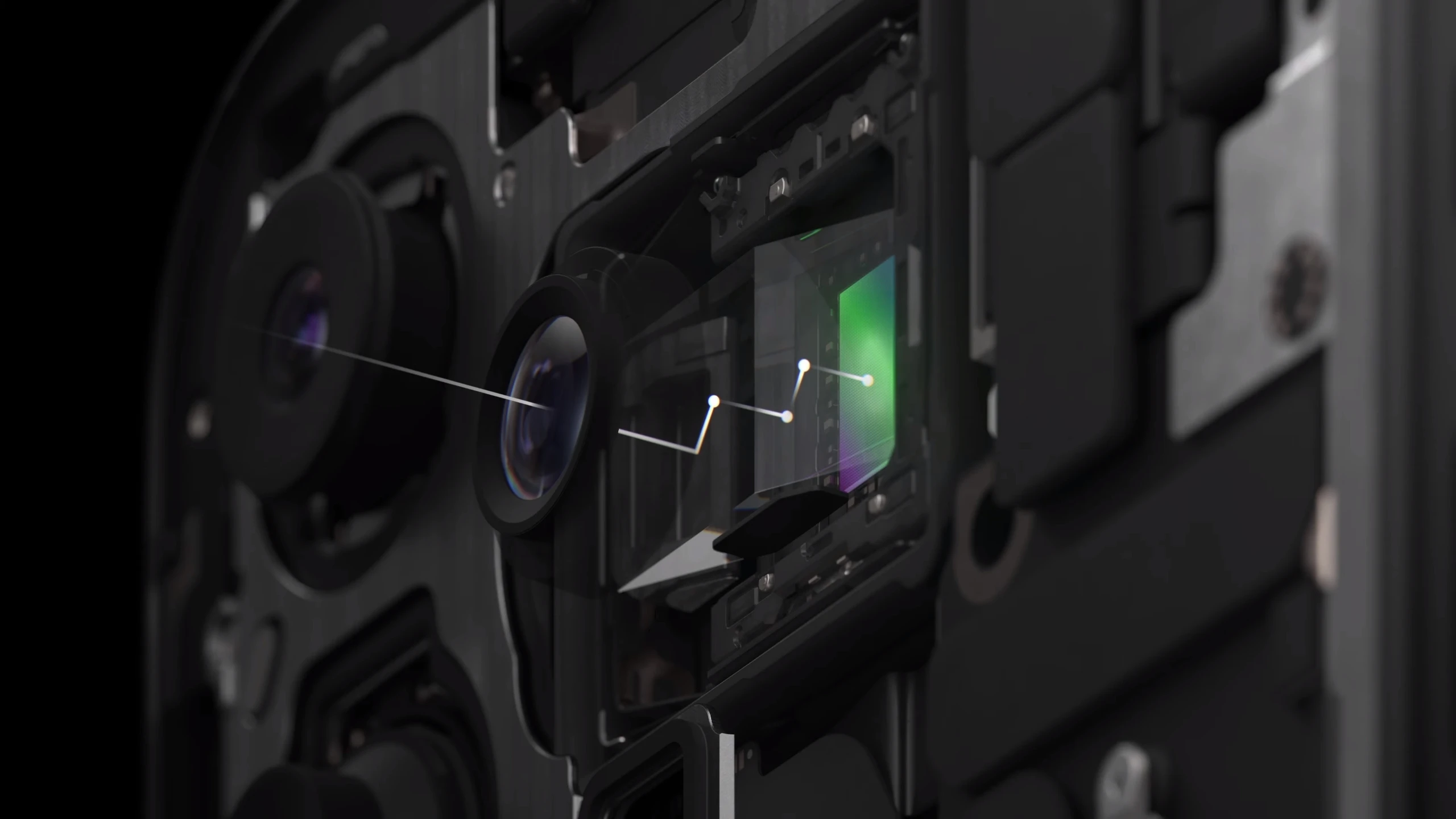
Instead, the big news is the new telephoto lens. It doesn’t actually have the expected periscope design that competitors use, but a tetraprism where light is reflected four times to achieve a focal length of 120mm. With longer telephoto lenses, however, the risk of image shake increases, so it has a new image stabilisation feature where the entire sensor moves three-dimensionally to compensate for movement. After testing it against competitors with large optical zoom, we have to say that Apple has done a great job, it’s right up there with the Google Pixel 7 Pro, in fact a little better!
But what’s getting stale is the ultra-wide angle, which is still at 12 megapixels without any image stabilisation. We guess it’ll get an upgrade when next year’s model is introduced.
Video recording has also received nice upgrades for those who want to use the iPhone professionally. You can now select Log encoding when recording ProRes video for later colour grading. And thanks to the USB-C port, you can now record in 4K60 to external SSD storage. You can now also lock the white balance when recording video and use digital zoom, even in cinema mode.
Application
But one small innovation that makes life a little easier is that the old ring/mute switch has now been replaced by an action/shortcut button. By default, it does exactly the same thing, but you can change the function in the settings. Such as switching on the flashlight, switching to a specific focus mode, starting a voice recording or even starting the camera. It can also be used as a shutter button. More efficiently, it can be linked to a shortcut, which can do everything from opening your favourite app to starting an automation in your smart home. It took no time at all to get used to. But we’re hoping for a software update that allows you to activate more functions, for example with a double tap.
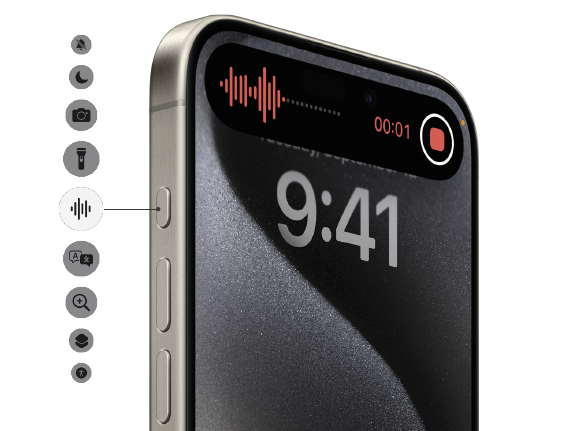
The new USB-C connector means that in addition to using the same charging cable as for Mac and iPad, there are actually new applications. For example, you can charge your Apple Watch or Airpods from the connector at up to 4.5 watts. The connector also supports Displayport, so you can connect the iPhone 15 Pro Max to a monitor and display up to 4K60 video with HDR. With a Thunderbolt 4 cable, you get up to 20 times faster performance than Lightning, opening up new possibilities, like in the example above with video recording to an SSD.
Samsung's foldable concept is nearing perfection, but who will buy it?
Like the new Apple Watch Series 9 and Ultra 2, iPhone 15 features the second generation Ultra Wideband circuitry. It has three times the range, making it practical to use it to find a friend ( who has an iPhone 15) in a crowd. We wouldn’t mind an upgraded Airtag with the same technology.
Pixel 7 Pro is Google's reference phone that shows how Android 13 should be used. And now it's available.
For those of us concerned with the smart home, we found in the fine print that the iPhone 15 Pro is actually the first smartphone to support the Thread standard. This means that in the future, after an upcoming update, you won’t need a hub to connect to a Thread-enabled smart device. One of the technologies included in the Matter standard.
Performance
Inside we find the new A17 Pro system on a chip (SoC). It’s built with new 3nm technology and is said to have a twice as fast Neural Engine (for machine learning), which should deliver a total of 10 per cent better performance. The fact that the 15 Pro has more memory should also make everything feel faster. According to the Geekbench performance test, it’s a bit modest. It’s 18 per cent faster with one core and 16 per cent faster with all cores. Not bad!
A major change in the system circuitry is that the graphics processor has gotten an extra core and has reportedly been completely redesigned. It now supports hardware-accelerated ray tracing and has adopted technology from the Mac to achieve higher quality with lower power consumption. This is said to give a performance boost of 20 per cent. According to the 3DMark Wild graphics performance test, it fits the bill nicely, which is a significant performance improvement.
Synthetic tests are fine, of course, but also in more reality-based tests like Basemark Web and Antutu HTML5, which measure browser performance, we got 20-25 per cent higher results.
In its presentation, Apple emphasised that the A17 Pro is significantly more energy efficient. Something that has been long awaited, as the iPhone 14 Pro Max actually had worse battery life than the 13 Pro Max. If we are to be constructive, we can say that the battery life is now back to the 13 Pro Max level, which was actually very good. But more realistically, why isn’t the battery life better than on a two-year-old model?
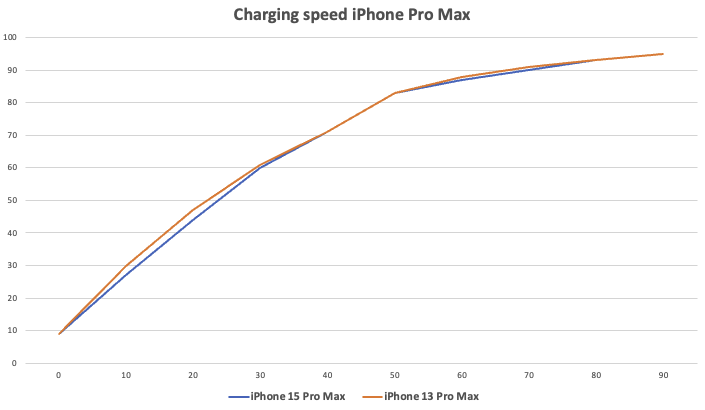
With the new USB-C connector, you would expect official Power Delivery support with the ability to fast charge with third-party chargers. But that’s not what happened. The 15 Pro Max charges at the same mediocre 27 watts as the old Lightning models. Yes, it delivers 50% charge in 30 minutes. But that’s exactly the same charging speed as the 13 Pro Max. We’ve measured.
However, we are happy that the iPhone Pro now supports Wi-Fi 6E, 6 GHz band, so it can really get the highest wireless speed without having to compete with all the devices on the 5 GHz band.
Conclusion
Our initial impression that the iPhone 15 Pro Max had only isolated improvements has been replaced by a feeling of satisfaction. It turns out that all the little things add up to a great experience. We like the lighter design and everyday conveniences like the quick button, not having to look for a Lightning cable when charging and the fact that battery life is back to a comfortable level. We’re also impressed with the increased performance and the new telephoto camera. After last year’s disappointment, the Pro Max is back in the game!

We think
Finally, a proper optical zoom. Big performance boost. Lightweight and stylish thanks to titanium. Smart shortcut button. More professional video format with external storage. Bigger memory. No better charging speed despite USB-C. No better battery life than the 13 Pro Max.
1499 €
Specifications
- Operating system: iOS 17
- Display: 6.7-inch LTPO OLED 1290 x 2796 120 Hz 1000 nits
- Processor: 3.78 GHz Apple A17 Pro 3nm
- Memory/storage: 8 GB / 256 GB-1TB
- Main camera: 48 Mp f/1.8 24mm 1/1.28″ sensor shift OIS
- Wide-angle camera: 12 Mp f/2.2 13mm 120˚ 1/2.55″
- Telephoto camera: 12 Mp f/2.8 120 mm 5x 3D sensor shift OIS
- Selfie camera: 12 Mp f/1.9 23 mm 1/3.6″ OIS
- Wireless: 5G, Wi-Fi 6E, BT 5.3, NFC
- Dimensions/weight: 160 x 77 x 8.3 mm, 221 grams
- Battery: 4422 mAh, 27 watts USB-C, 15 watts wireless
- Web: apple.com
Benchmarks
- Geekbench 6 (single/multi/compute): 2 953/7 289/27 424
- Antutu 10: 1 496 219
- GFXBench T-Rex: 20 091 frames
- GFXBench Aztec ruins high tier (on/off screen): 58,4/17,9 fps
- 3DMark Wild Life Extreme: 3212 (19,2 fps)
- 3DMark Solar Bay unlimited: 5167 (19,6 fps)
- Basemark Web: 1887
- GFXbench battery: 10 h 20 min
